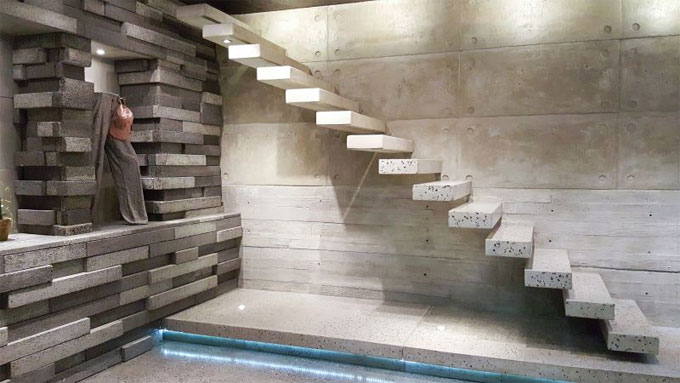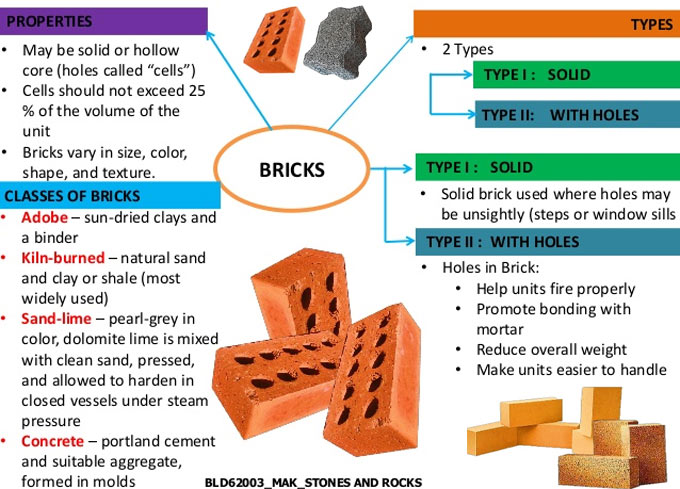With the emergence of advance technology, the color, texture and patterns can now be added to concrete to make it decorative and stylish product.
Given below, some useful tips on how to utilize aesthetic concrete in designs.
1. Stamped concrete: Emulating nature and reiterating the appearance of natural materials like wood grain textures or rock patterns, or even brick outlines and other creative designs, stamped concrete offers huge scopes for making decorative concrete surfaces. Now, advance technology makes it possible to provide decorative art effects on both walls and other vertical surfaces, both interior and exterior.
2. Lightly etched concrete: Now, lightly etched concrete surfaces are also becoming popular. These types of surfaces do not contain any joints and produce seamless surfaces. Usually, it is formed with sandblasting or acid wash. To develop a light surface with approx thickness of 0.25 mm, extra-light surface retarders are utilized. This dry-shake powder can is integrated with fresh cast-in-place concrete and new-generation stencils rather than stamps. Different types of designs are formed with diverse colors.
3. Shaped (precast) concrete: With shaped concrete, it is possible to develop attractive vertical surfaces. With the application of formwork or moulds to cast concrete panels, various types of shapes or designs can be produced which one can visualize with concrete from gently flowing structures, curves, edges and more.
4. Colored concrete: By applying an extensive range of color pigments, both ready-mix concrete and dry-cast products are colored to diverse intensities, shades and brightness. One can only select to color the surface or to indicate integral coloring, which permeates the concrete throughout in order that the color won’t wear away with the existence of abrasion.
It should be kept in mind that the same cement from the same plant should be employed to provide a persistent color because portland cement can change from light to dark grey. The color of pigmented concrete can also be changed with the cement content, aggregate color and texture, as well as the total water content.
In order to color or decorate existing concrete as well as repair faded colors, the concrete dyes, stains are used or it can be done with an overlay of pigmented concrete.
5. Metallic coatings: Metallic coatings are also used to produce unique dazzling textures and effects. They are suitable for industrial interiors where two surfaces do not appear exactly same. Metallic epoxy coatings are normally utilized with a coating knife and softened over the vertical surface or smeared with the help of creative blending methods. It is possible to apply in excess of one metallic color, with or without an accent background color, and can even create textured surfaces.
To get more detail, go through the following video tutorial www.buildinganddecor.co.za

~~~~~~~~~~~~~~~~~~~~~~~~
Published By
Rajib Dey
www.constructioncost.co
~~~~~~~~~~~~~~~~~~~~~~~~
Given below, some useful tips on how to utilize aesthetic concrete in designs.
1. Stamped concrete: Emulating nature and reiterating the appearance of natural materials like wood grain textures or rock patterns, or even brick outlines and other creative designs, stamped concrete offers huge scopes for making decorative concrete surfaces. Now, advance technology makes it possible to provide decorative art effects on both walls and other vertical surfaces, both interior and exterior.
2. Lightly etched concrete: Now, lightly etched concrete surfaces are also becoming popular. These types of surfaces do not contain any joints and produce seamless surfaces. Usually, it is formed with sandblasting or acid wash. To develop a light surface with approx thickness of 0.25 mm, extra-light surface retarders are utilized. This dry-shake powder can is integrated with fresh cast-in-place concrete and new-generation stencils rather than stamps. Different types of designs are formed with diverse colors.
3. Shaped (precast) concrete: With shaped concrete, it is possible to develop attractive vertical surfaces. With the application of formwork or moulds to cast concrete panels, various types of shapes or designs can be produced which one can visualize with concrete from gently flowing structures, curves, edges and more.
4. Colored concrete: By applying an extensive range of color pigments, both ready-mix concrete and dry-cast products are colored to diverse intensities, shades and brightness. One can only select to color the surface or to indicate integral coloring, which permeates the concrete throughout in order that the color won’t wear away with the existence of abrasion.
It should be kept in mind that the same cement from the same plant should be employed to provide a persistent color because portland cement can change from light to dark grey. The color of pigmented concrete can also be changed with the cement content, aggregate color and texture, as well as the total water content.
In order to color or decorate existing concrete as well as repair faded colors, the concrete dyes, stains are used or it can be done with an overlay of pigmented concrete.
5. Metallic coatings: Metallic coatings are also used to produce unique dazzling textures and effects. They are suitable for industrial interiors where two surfaces do not appear exactly same. Metallic epoxy coatings are normally utilized with a coating knife and softened over the vertical surface or smeared with the help of creative blending methods. It is possible to apply in excess of one metallic color, with or without an accent background color, and can even create textured surfaces.
To get more detail, go through the following video tutorial www.buildinganddecor.co.za

~~~~~~~~~~~~~~~~~~~~~~~~
Published By
Rajib Dey
www.constructioncost.co
~~~~~~~~~~~~~~~~~~~~~~~~
